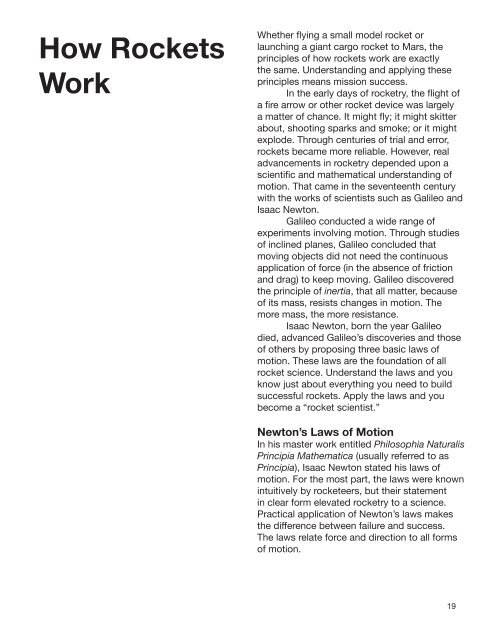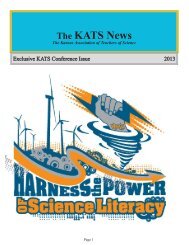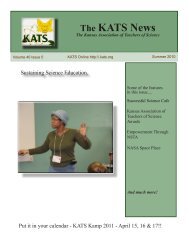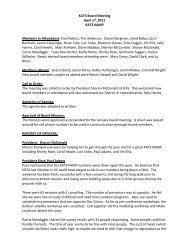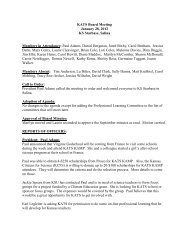Create successful ePaper yourself
Turn your PDF publications into a flip-book with our unique Google optimized e-Paper software.
How Rockets<br />
Work<br />
Whether flying a small model <strong>rocket</strong> or<br />
launching a giant cargo <strong>rocket</strong> to Mars, the<br />
principles of how <strong>rocket</strong>s work are exactly<br />
the same. Understanding and applying these<br />
principles means mission success.<br />
In the early days of <strong>rocket</strong>ry, the flight of<br />
a fire arrow or other <strong>rocket</strong> device was largely<br />
a matter of chance. It might fly; it might skitter<br />
about, shooting sparks and smoke; or it might<br />
explode. Through centuries of trial and error,<br />
<strong>rocket</strong>s became more reliable. However, real<br />
advancements in <strong>rocket</strong>ry depended upon a<br />
scientific and mathematical understanding of<br />
motion. That came in the seventeenth century<br />
with the works of scientists such as Galileo and<br />
Isaac Newton.<br />
Galileo conducted a wide range of<br />
experiments involving motion. Through studies<br />
of inclined planes, Galileo concluded that<br />
moving objects did not need the continuous<br />
application of force (in the absence of friction<br />
and drag) to keep moving. Galileo discovered<br />
the principle of inertia, that all matter, because<br />
of its mass, resists changes in motion. The<br />
more mass, the more resistance.<br />
Isaac Newton, born the year Galileo<br />
died, advanced Galileo’s discoveries and those<br />
of others by proposing three basic laws of<br />
motion. These laws are the foundation of all<br />
<strong>rocket</strong> science. Understand the laws and you<br />
know just about everything you need to build<br />
successful <strong>rocket</strong>s. Apply the laws and you<br />
become a “<strong>rocket</strong> scientist.”<br />
Newton’s Laws of Motion<br />
In his master work entitled Philosophia Naturalis<br />
Principia Mathematica (usually referred to as<br />
Principia), Isaac Newton stated his laws of<br />
motion. For the most part, the laws were known<br />
intuitively by <strong>rocket</strong>eers, but their statement<br />
in clear form elevated <strong>rocket</strong>ry to a science.<br />
Practical application of Newton’s laws makes<br />
the difference between failure and success.<br />
The laws relate force and direction to all forms<br />
of motion.<br />
19


